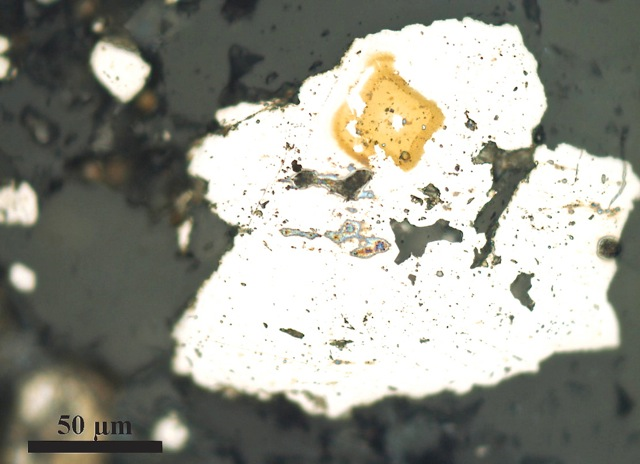Contributor: Alan J. Kaufman

Over half of the organic matter that makes its way into modern ocean sediments is re-mineralized back to inorganic carbon by anaerobic sulfate-reducing bacteria. But because of a lack of isotopic fingerprints in the fine-grained pyrite-rich shale rocks (which are most typically measured), the antiquity of this microbial lineage is a question that has long vexed evolutionary biologists and geochemists who study the ancient Earth. A team of researchers from the University of Maryland Geology Department and the University of Western Australia analyzed micron-sized pyrite grains in 2.5 billion year old Brazilian carbonate rocks using ion probe techniques, revealing a large range in the sulfur isotope composition.
Bulk, microdrilled, and ion probe sulfur isotope data from carbonate-associated pyrite in the ~2.5-billion-year-old Batatal Formation of Brazil revealed large mass-dependent fractionations (approaching 50 per mil) associated with microbial sulfate reduction. Data also showed consistently negative Δ33S values (~ -2 per mil), which is indicative of atmospheric photochemical reactions. Using a geochemical model of these sulfur isotope data, scientists showed that today's oceans may contain 1,000 times more sulfate than there was 2.5 billion years ago.
Carbonate environments, especially those with high rates of evaporation, may have concentrated sulfate from ocean water, thereby stimulating microbial activity in anoxic sediments. Evidence supports that, at a time when the atmosphere was lacking in oxygen, microbial sulfate reduction was an important metabolism in shallow oceanic environments.
Iadviga N. Zhelezinskaia & Alan J. Kaufman - Dept of Geology, UMD; James Farquhar – Dept of Geology & Earth System Science Interdisciplinary Center, UMD; John Cliff - Dept of Physics, University of Western Australia.